Affiliate links on Android Authority may earn us a commission. Learn more.
Apple Watch vs Garmin: Which is the right platform for you?
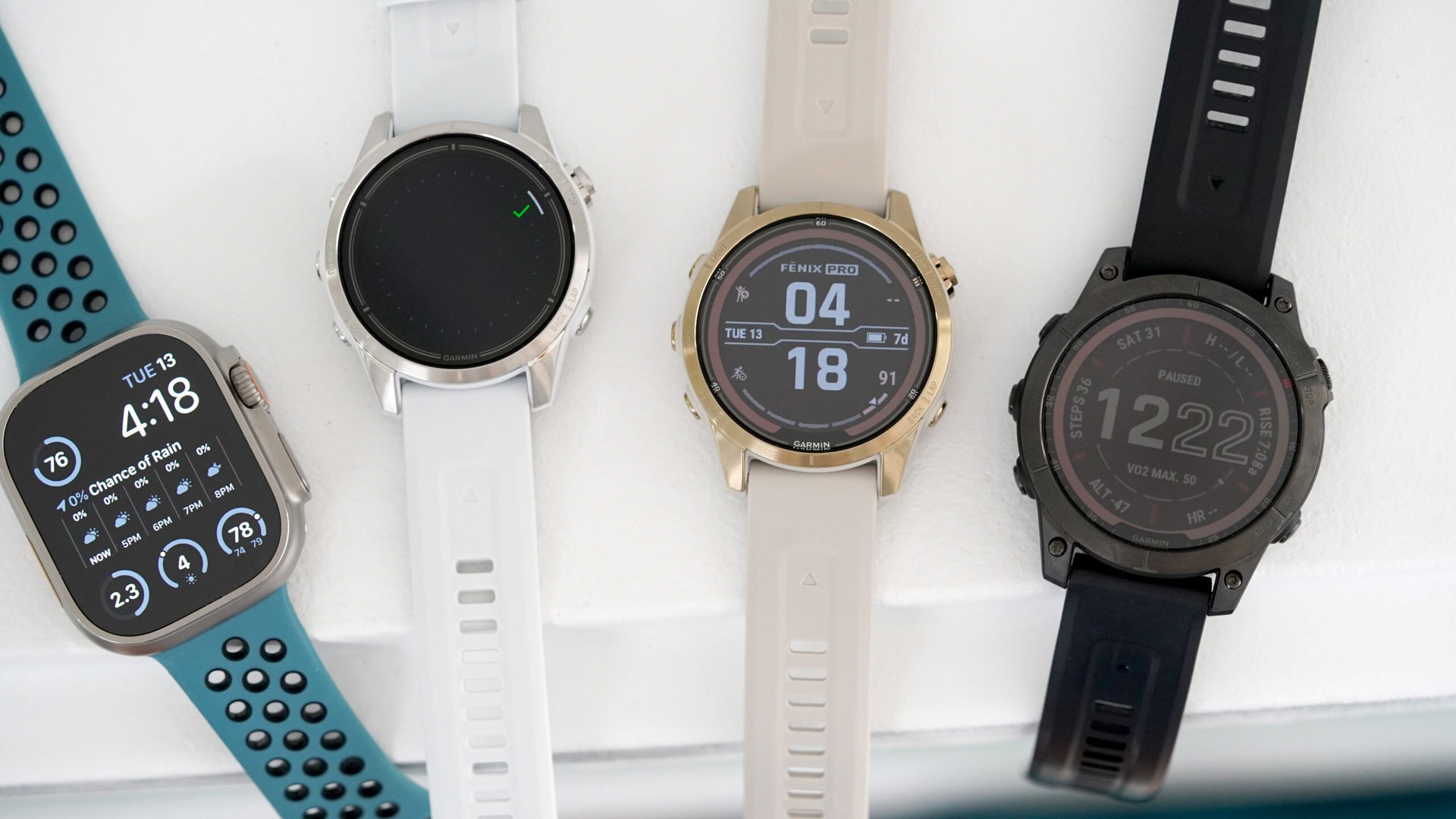
If you’re in the market for a new wearable, you may need to make a big decision. Two industry giants, Apple and Garmin, both have a lot to offer users. Many users swear an Apple Watch is worth every penny, but loads of athletes claim Garmin is unrivaled. While each has strengths and weaknesses, both provide a bevy of fitness tracking data, smartwatch features, and hardware options. Here’s everything you need to know when comparing the Apple Watch vs Garmin’s stable.
Apple Watch vs Garmin: Smartwatches and sport watches
The Apple Watch is one of the most influential smartwatches in existence despite the growing number of Apple Watch alternatives. Apple’s wearables track your workouts, support third-party apps, and boast large, crisp displays.
Apple Watch lineup
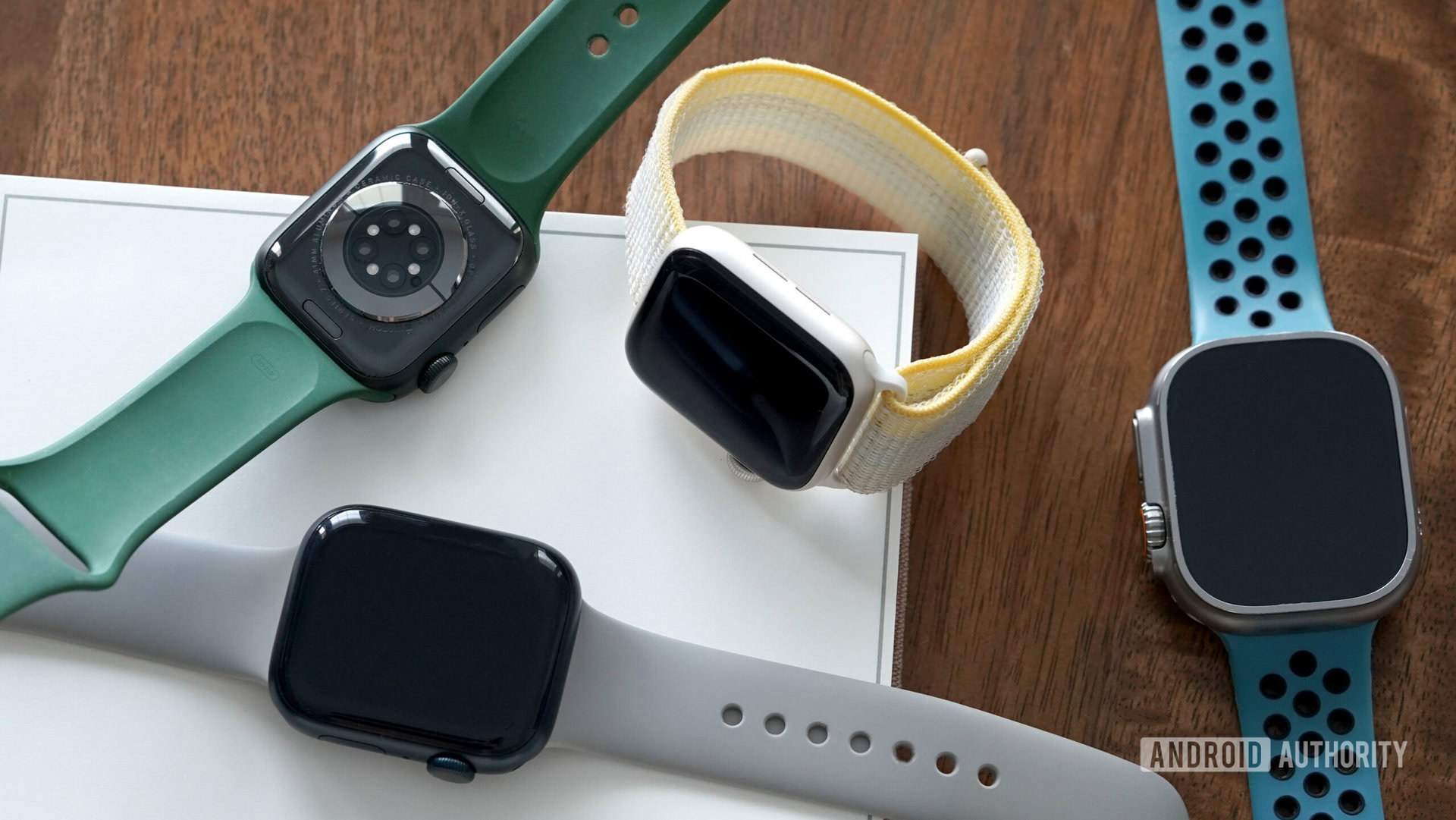
The list below represents the most recent and relevant Apple Watch models.
- Apple Watch Series 9 ($392.67 at Amazon): Launched in early fall 2023, the Series 9 is the latest flagship wearable from Apple. It adds a powerful S9 chipset, a brighter display, and features like onboard Siri queries and the Double Tap gesture control.
- Apple Watch Series 8 ($329 at Amazon): It offers the same premium build and design as the Series 7 but adds crash detection and advanced health sensors we found very accurate.
- Apple Watch Series 7 (on the product’s website): The Apple Watch Series 7 wasn’t a huge upgrade from the Series 6, however, it ushered in a bigger display and more durability. Its performance and battery life, unfortunately, remain on par with the previous generation. We also found the Series 7’s heart rate sensor to be quite finicky.
- Apple Watch Series 6 ($13 at Amazon): Apple no longer officially sells the Series 6, but we think it’s still a worthy wearable if you can find one. The device offers great GPS and heart rate tracking, all-day battery life, and a nice display.
- Apple Watch SE 2 ($269.99 at Amazon): Alongside the Apple Watch Series 8, the company also launched the second generation of its budget lineup: the Apple Watch SE 2. This device builds on the success of the Apple Watch SE with an upgraded processor and handy low-battery mode. If you can live without advanced sensors like the ECG and SpO2 monitors, it’s a solid smartwatch that will save you some money.
- Apple Watch Ultra 2 ($759.99 at eBay): The Apple Watch Ultra 2 builds on the original with a faster processor, brighter screen, and more precise location tracking.
- Apple Watch Ultra ($799 at Amazon): A considerably more expensive device than the original series, the Apple Watch Ultra line represents Apple’s first foray into the adventure market. The Apple Watch Ultra boasts the stable’s largest, most durable display, plus extra battery life and niche features for outdoor enthusiasts we love.
Apple Watches haven’t changed much over the years, so the differences between each series are minute. The exception to this is the Apple Watch Ultra line, which is meant for a very specific set of users. In contrast, Garmin has many different sports watch styles, from AMOLED-touting smartwatches to multisport fitness watches that prioritize battery life.
Garmin smartwatches and sports watches
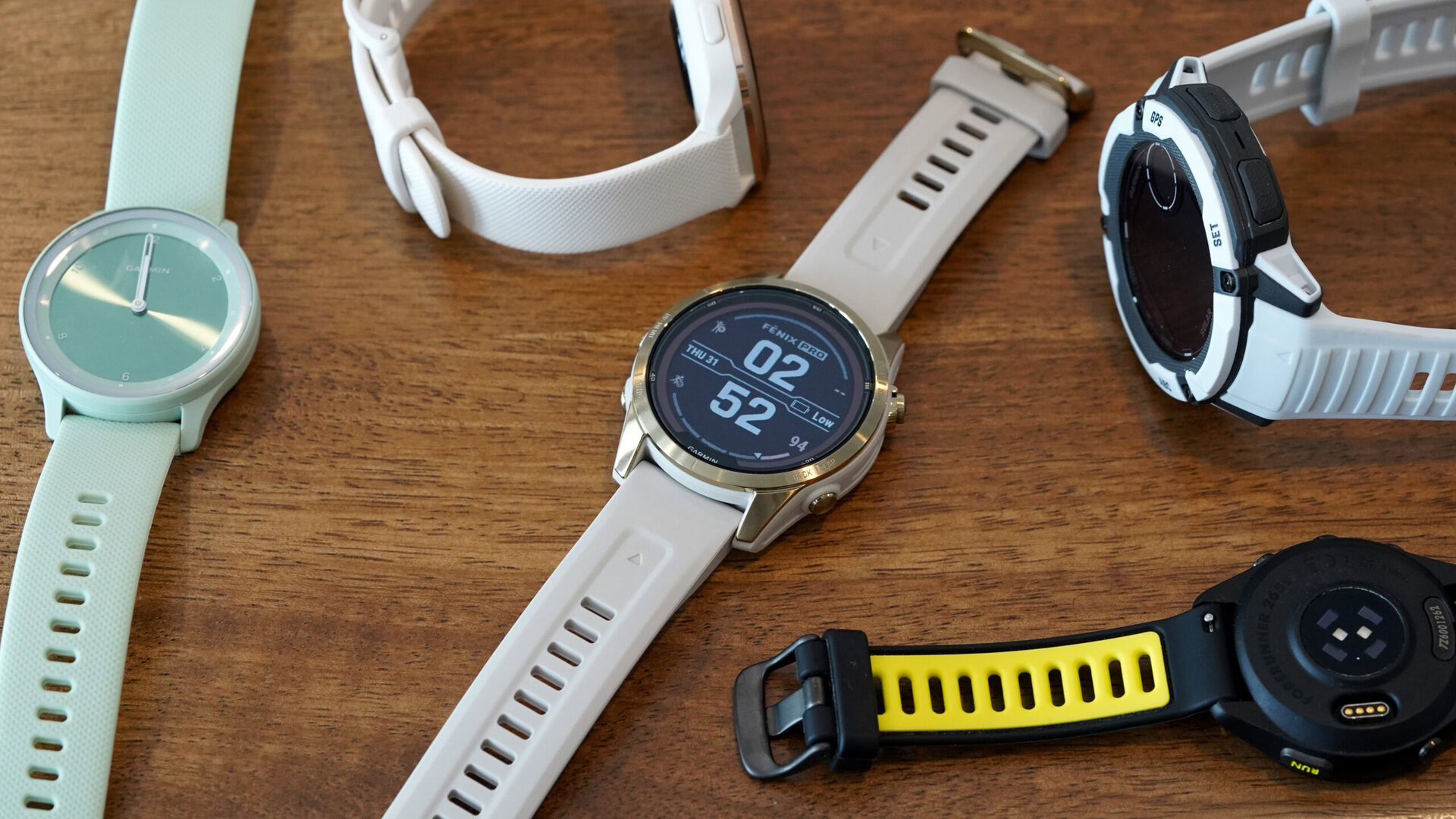
- Garmin Venu series: Garmin’s full-fledged smartwatch line, Venu devices feature attractive AMOLED displays, impressive battery life, and an increasing amount of smart features. They’re a great buy for athletes who want dedicated fitness tracking and conveniences like phone call support. The most recent model, The Venu 3 ($449.99 at Amazon), adds additional sleep-tracking features and advanced training tools. The Venu Sq 2 ($249.99 at Amazon), meanwhile, is best for anyone interested in the Garmin Venu line but looking for something a bit cheaper
- Garmin vivomove series: Garmin’s vivomove series is one of its most unique with beautiful hybrid smartwatches featuring real, ticking watch hands. Our favorite pick is the vivomove Sport ($179 at Amazon) with its hidden LED display.
- Garmin Forerunner: The Garmin Forerunner series is your best option if you’re a runner. Ranging from budget-friendly devices like the Forerunner 155 ($249.99 at Garmin) to all-in devices like the Forerunner 965 ($599.99 at Garmin), there’s something for every runner in this lineup. We were especially thrilled with the line’s new AMOLED displays on the latest models.
- Garmin Fenix series: If you’re after the most feature-packed multisport smartwatch you can buy, Garmin’s Fenix series is it. These high-end watches are for serious athletes who spend most of their time outdoors. It even comes in solar models. The newest model, the Fenix 7 Pro (on the product’s website), features everything from multi-band GNSS support and mapping to a built-in LED flashlight.
- Garmin Epix series: Essentially Fenix devices with AMOLED displays, Garmin’s Epix devices represent the top of the line. The newest Epix Pro ($899.99 at Amazon) is available in three sizes.
- Garmin Instinct series: Similar to the Fenix stable but built for outdoor enthusiasts, the rugged Instinct lineup offers shoppers the most durable experience available. A follow-up to the Garmin Instinct 2, the latest generation offers multiple color and size options, impressive battery life, and compatibility with the Garmin Connect IQ app.
- Garmin Lily 2: The Garmin Lily 2 ($249.99 at Garmin) is designed for women and those generally with smaller wrists. It features a light, comfortable build, available in two design styles.
Apple Watch vs Garmin: Activity and health tracking
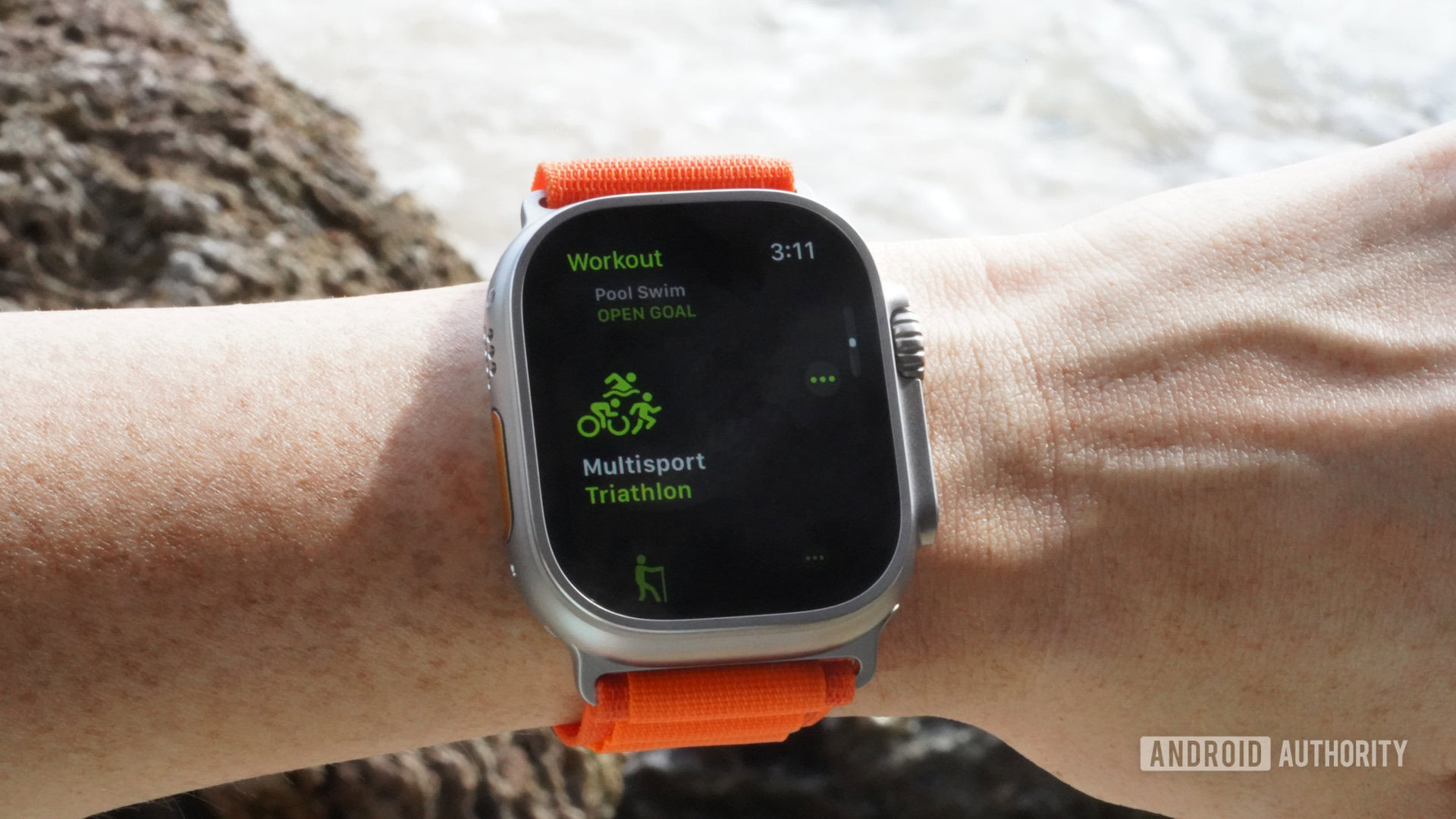
Apple and Garmin offer two of the most health-focused wearable platforms available. No matter which device you choose, you’ll be able to monitor tons of metrics and utilize a variety of activity profiles. All recent Apple Watches and Garmin watches will keep track of your steps, distance traveled, active and resting calories burned, floors climbed and elevation, intensity/active minutes, resting and active heart rate, heart rate variability (HRV), VO2 max, sleep, stress, and blood oxygen saturation.
The two platforms also offer more specialized features. Apple Watch Series 4 and up devices come with on-device ECG monitors. The company also offers detection for signs AFib and AFib History, a feature designed to provide long-term visibility into users’ heart rate activity. Apple also offers Cardio Recovery, which allows users to monitor their recovery after an outdoor walk, run, or hike and track their recovery over time in the Health app.
Garmin’s latest devices, including those with the company’s Elevate Gen 5 heart rate sensor, also offer ECG recordings. Most Garmin devices will track your Body Battery (the amount of energy you have left based on your activity level), HRV, stress, and sleeping patterns. This helps users, and particularly athletes, plan training and rest.
On the subject of sleep, Apple and Garmin also host different approaches to sleep tracking. In the past, we found Apple’s sleep tracking very basic compared to many other sleep trackers on the market. However, with the release of watchOS 9 and 10, Apple now brings deeper analysis to users’ wrists. On the other hand, Garmin watches are already some of the most robust and accurate sleep trackers out there. They track users’ sleep duration, disturbances, and stages and even provide a sleep score in the morning based on how well you slept. The Venu 3 even automatically tracks naps.
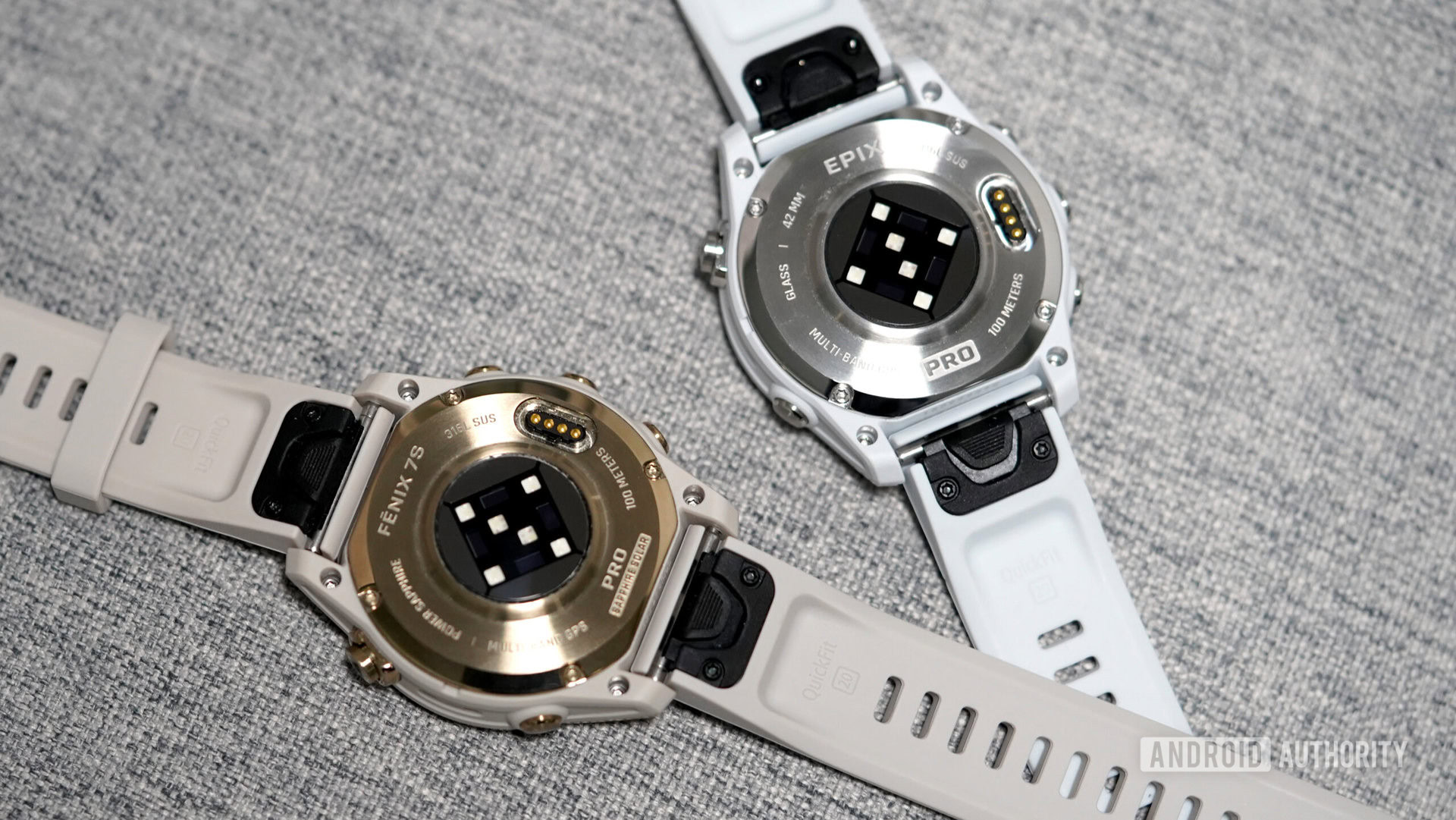
As mentioned, both platforms track your resting heart rate throughout the day and night and record active heart rates during workouts. If you experience abnormally high or low heart rate readings during times of inactivity, both platforms will notify you. During exercises, both Apple Watch and Garmin devices will track your heart rate zones and average and maximum heart rate. Apple’s Fitness app also gives you a nice heart rate recovery graph after you finish your exercise.
Regarding heart rate sensor accuracy, we have found recent Apple Watches to be some of the most accurate wrist-based heart rate sensors you can buy — with one exception. The Apple Watch Series 7 gave us several issues trying to get accurate and consistent measurements. On the other hand, the Apple Watch Series 8 and 9 performed perfectly, as did the Apple Watch SE 2, Ultra, and Ultra 2.
Garmin’s recent wearables also offer great heart rate tracking. Specifically, the entire current-gen Forerunner series and Fenix 7 line offer stellar heart rate data during runs and other exercises. Data from the Garmin Venu 2 Plus wasn’t as accurate, in our experience, but the Venu 3 was. Some Garmin devices also provide a Recovery Heart Rate, which measures your heart’s ability to drop back to a normal rate after a workout.

Both Apple Watch and Garmin watches also offer solid GPS tracking. Most Garmin watches are equipped with GPS, GLONASS, and Galileo, while the latest Apple Watches support GPS, Galileo, GLONASS, QZSS, and BeiDou. Accuracy between the two platforms is usually consistently high.
While you’re tracking an activity, Apple and Garmin devices can both notify emergency contacts if something goes awry. The Apple Watch offers “fall detection,” which can trigger if it senses you’ve abruptly stopped. It’ll then ask you if you’d like to contact emergency services. If it senses you’re immobile for over a minute, it’ll contact emergency services automatically.
Both Garmin and Apple offer incident detection features to help keep you safe.
Garmin’s incident detection works similarly. If your Garmin watch senses you fall, it’ll send your name and location to your emergency contacts. It will not, however, notify emergency services on its own. The Apple Watch Series 8, Series 9, and Apple Watch Ultra line also offer Crash Detection and can alert emergency services if they determine a user has been in an accident.
For those who menstruate, Apple and Garmin both offer cycle tracking. Users can log and view menstrual cycle symptoms and receive period and fertility window predictions. The Cycle Tracking app for the Apple Watch lets you log spotting and basal body temperature. The Series 8 and 9 and Ultra and Ultra 2 even feature a temperature sensor for retroactive ovulation predictions and greater period tracking accuracy. Meanwhile, in Garmin Connect, users can set reminders and receive nutrition, training, and general health guidance.
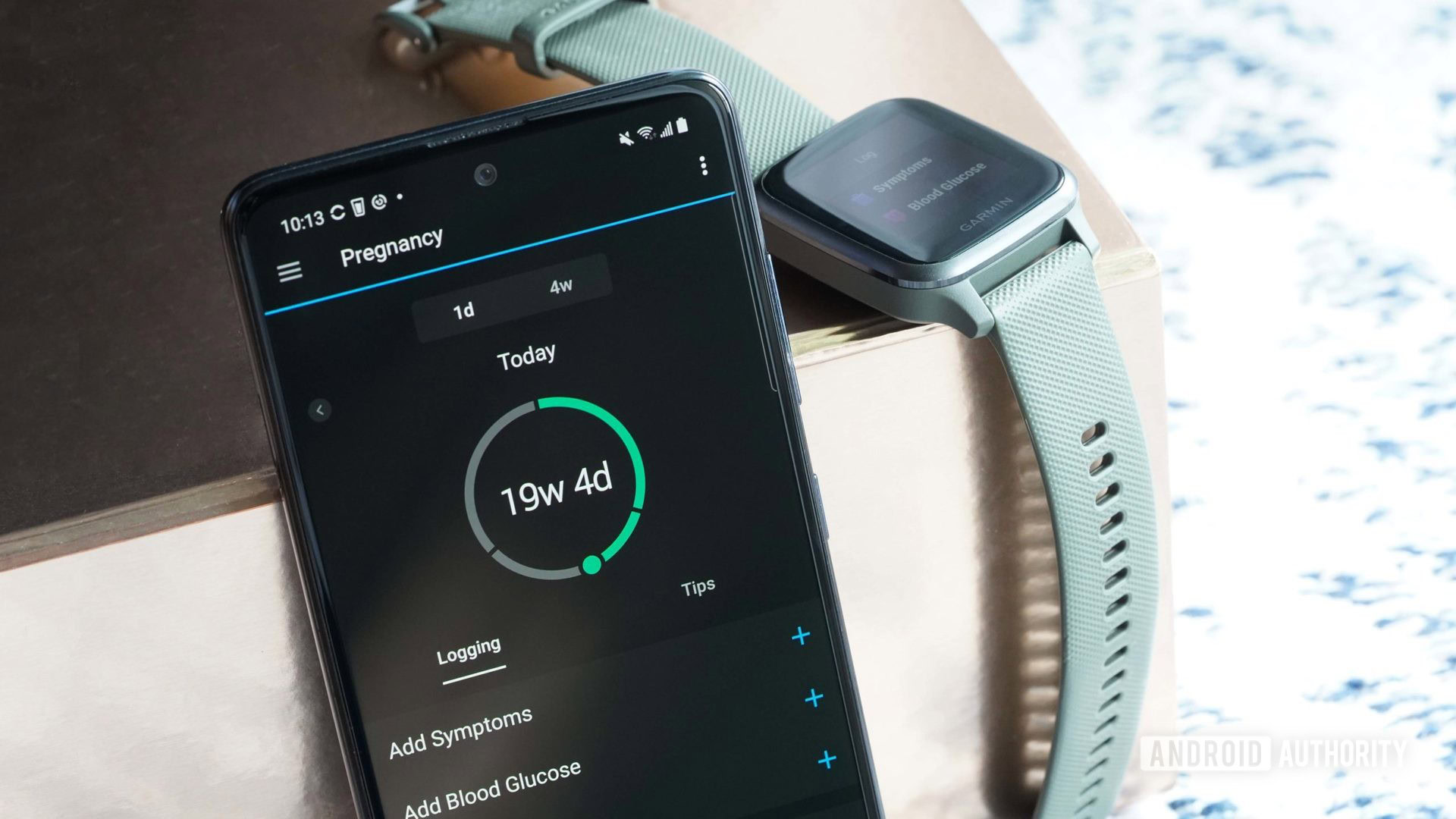
Garmin also takes female health tracking one step further with pregnancy tracking. Users can log and view symptoms, track baby movements, and record blood glucose levels. You’ll also receive weekly feedback and advice on nutrition, fitness, and weight.
Beyond these larger health and fitness tracking features, a comparison of Apple Watch vs Garmin could go on and on. Apple Watch Series 4 and later devices can give you environmental noise notifications. Garmin offers respiration tracking. Garmin offers native hydration tracking on its watches, and in Garmin Connect — there’s no need to download a third-party app to do so. Apple Watches can track your hydration via third-party apps, but not natively.
Finally, with most Garmin watches, you can access additional training features like your training status and effect, recovery time, performance condition, lactate threshold, and more. These advanced workout features are what set Garmin apart for serious athletes. Apple continues to expand its offerings in this area but has not yet caught up to Garmin’s level of detail.
We find the Apple Watch to be more than suitable for casual runners and athletes. However, one of Garmin’s strengths is that the company has specialty watches for all types of specific users. If your priority is quality training tools rather than smartwatch features, a Garmin running watch might be the better fit.
Apple Watch vs Garmin: Smart features
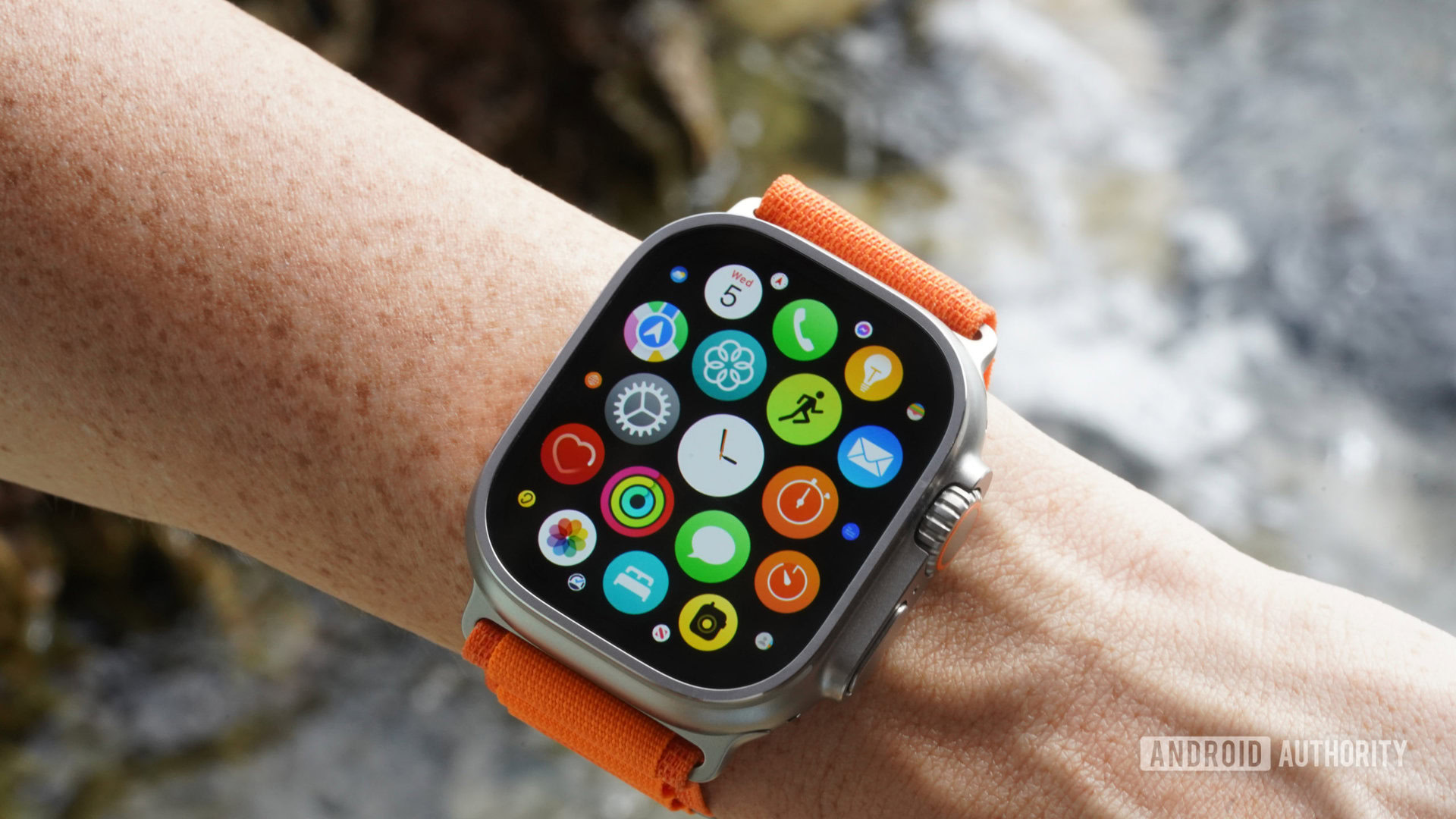
Apple Watches are smartwatches first and fitness trackers second. Even compared to the best of what the Android world has to offer (right now, we’d say a Samsung Galaxy Watch 6 series), the Apple Watch provides a robust, feature-packed device and a fluid software experience. The Apple Watch runs apps — both first- and third-party — and uses a condensed version of the App Store for its smartwatch line. Many of the apps available on your iPhone have watchOS counterparts. You can navigate on your wrist with Apple or Google Maps, chat with friends via Messages, or stream music with Apple Music. You can also use Siri.
Seeing as how Apple makes both the iPhone and Apple Watch, connectivity between the two devices is seamless. Many of the settings on the Apple Watch mirror your phone’s settings. There’s one big caveat about Apple Watches, though. They’re only compatible with iPhones. If you’re already an iPhone user, great! You can continue evaluating the pros and cons of an Apple vs Garmin wearable. However, if you’re on Android and refuse to switch to iOS, Garmin is your only option. Beyond Garmin, top Apple Watch alternatives include Wear OS smartwatches and Fitbit trackers.
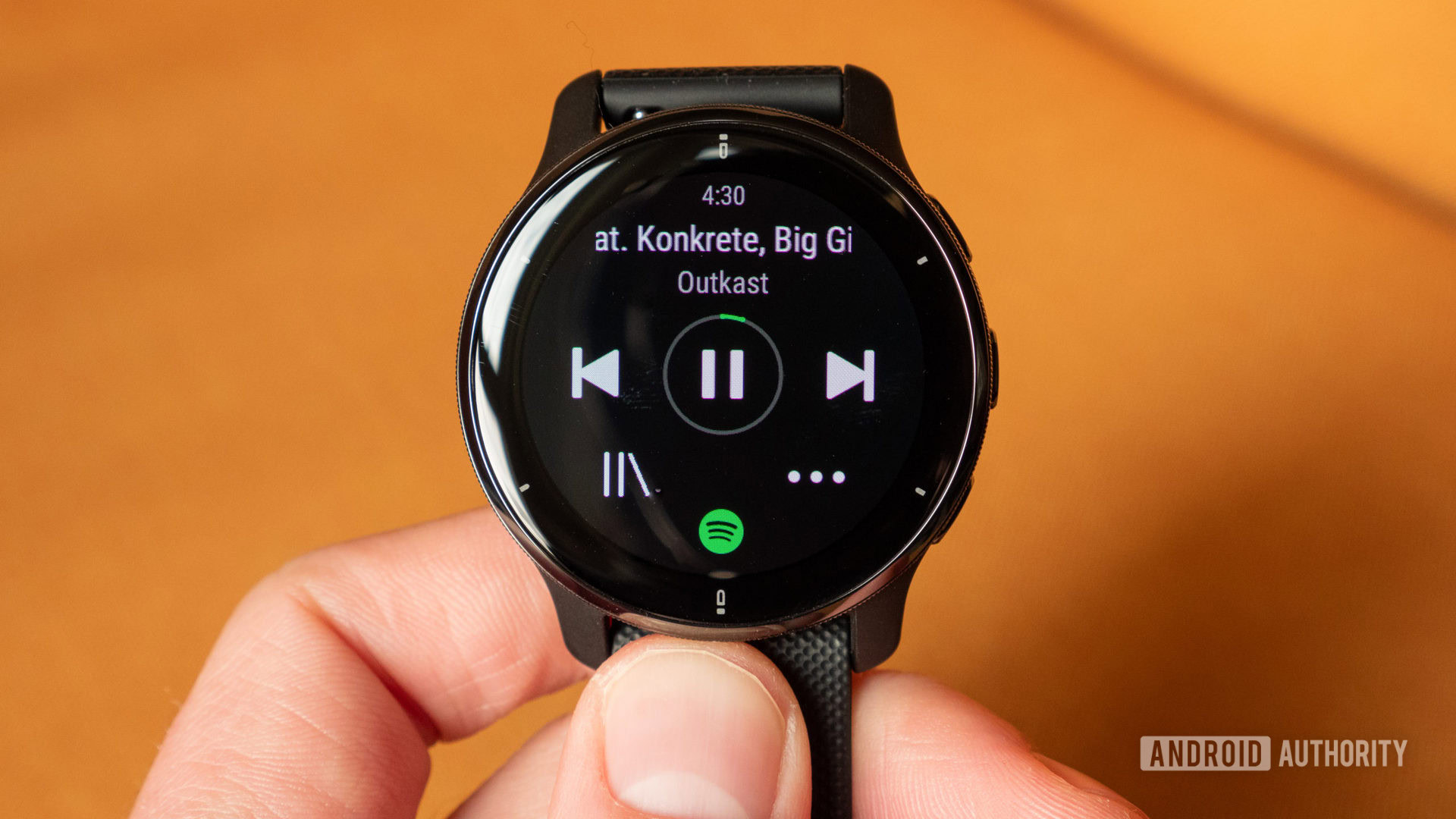
Garmin’s operating system is one of the better RTOS-based platforms available on smartwatches, though it’s clear that the basic menus and lack of animations leave much to be desired compared to watchOS. Garmin smartwatches also run first- and third-party apps, which can be downloaded via a separate app called Connect IQ. Most Garmin watches have support for popular music streaming services like Spotify. Due to the limitations of the RTOS software, Garmin apps tend to be simpler and more basic than Apple Watch apps. Currently, the list of Garmin watches with support for voice assistants is very limited.
However, Garmin has Apple beat when it comes to watch faces. The Apple Watch only supports first-party watch faces or ones made by Apple. It’s restricting and takes much of the fun out of owning a smartwatch. On the other hand, Garmin has hundreds of first- and third-party watch faces available from the Connect IQ store. Many of them are paid, but you can find some decent free ones, too.
With digital payment support, you can pay for things in physical stores from both devices. The Apple Watch uses Apple Pay, while Garmin watches support Garmin Pay. These services make both sets of devices especially handy for long-distance runners and cyclists who want to leave their wallets at home.
Importantly, Apple’s watchOS software may offer more fluid animations and better touchscreen support, but that comes at a cost. Most Apple Watches can only last a day or two on a single charge. You might have to conserve battery power if you want to do power-intensive things like go for a run with GPS or track your sleep. Garmin watches benefit from the battery-saving properties of RTOS. Most Garmin devices, depending on their display type and size, can last anywhere from four days to two weeks on a charge. Some even have solar charging.
No. A few Garmin devices offer solar models in their lineups, but the Apple Watch does not at this time.
Apple Watch vs Garmin: Companion apps

Companion apps and services are a major part of each ecosystem. After all, it’s how you’ll dig into your fitness watch’s data. Both Garmin and Apple feature robust companion apps. You’ll use Garmin Connect to access your data if you own a Garmin device. There’s a web version, as well as apps for Android and iOS. You can see all of your stats, from steps to training plans, on all three versions of Garmin Connect. Of course, some things like heart rate and GPS data can be easier to see on a full-fledged computer.
We’ve been critical of the Garmin Connect app. It’s extremely feature-packed, as there’s essentially little difference between the web and mobile versions, so the app can be difficult to navigate. Once you spend some time with it, though, you’ll enjoy the benefits of the data-rich home screen, useful monthly calendar view, and the ability to create custom workouts right inside the app. Garmin also has a different app called Connect IQ for downloading watch faces, apps, and widgets. You can access Connect IQ on the web, Android, and iOS.
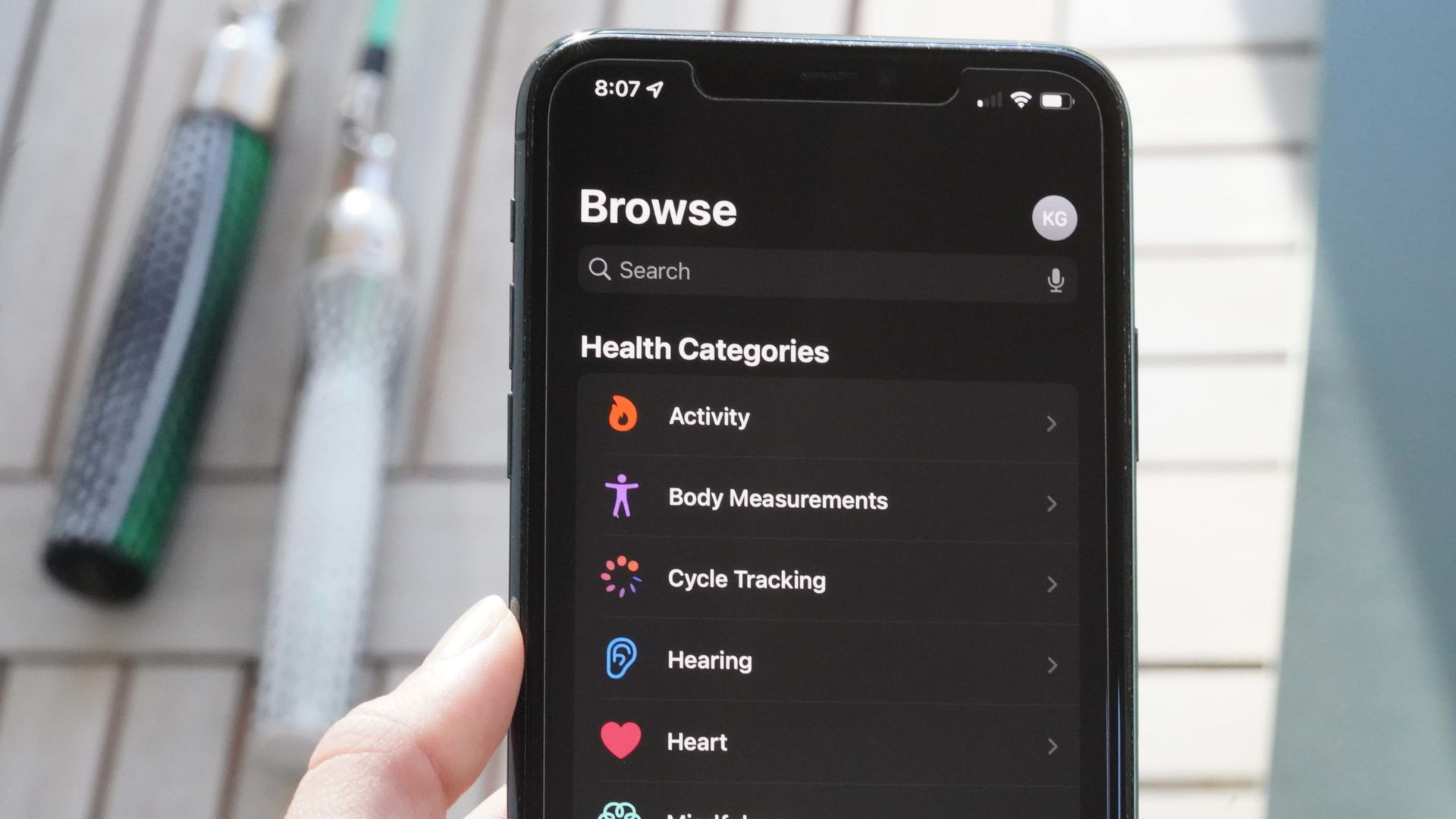
Apple’s setup is quite different from Garmin’s. You need to know about four apps, three of which we’ll talk about in this section. The first is the Watch app, which comes pre-installed on all iPhones, even if you don’t own an Apple Watch (cool move, Apple). The Watch app is where you’ll manage, download, and customize your watch faces, change app and notification settings, and more.
The Apple Fitness app is Apple’s, well, fitness-tracking app. It’s quite basic in that it only shows your tracked fitness data from your Apple Watch or other Apple devices, including a summary of your daily activity, recent workouts, fitness and exercise trends, and any awards or achievements you’ve earned. Apple Fitness Plus requires a subscription and offers more training features, fitness classes, and resources, but we’ll cover more on that below.
Apple Health is where all of your health data is stored. You can see your workouts and activity, as well as your sleep, heart rate, nutrition, respiratory data, and much more. Apple Health can get quite convoluted, too, unfortunately. We’ve found it to be too easy to get lost searching for the data you want. However, the app is saved by the Browse tab, which lets you narrow down your search using a search box or by selecting from various health categories.
When comparing Apple vs Garmin companion apps, choosing which one comes out on top is tough. Apple Health and Garmin Connect will take some time to get used to for new users. Garmin Connect is the better app for training metrics and custom workouts. Apple Health clearly displays all your health data in an easy-to-navigate list, making it the best app for quickly viewing data.
Premium features
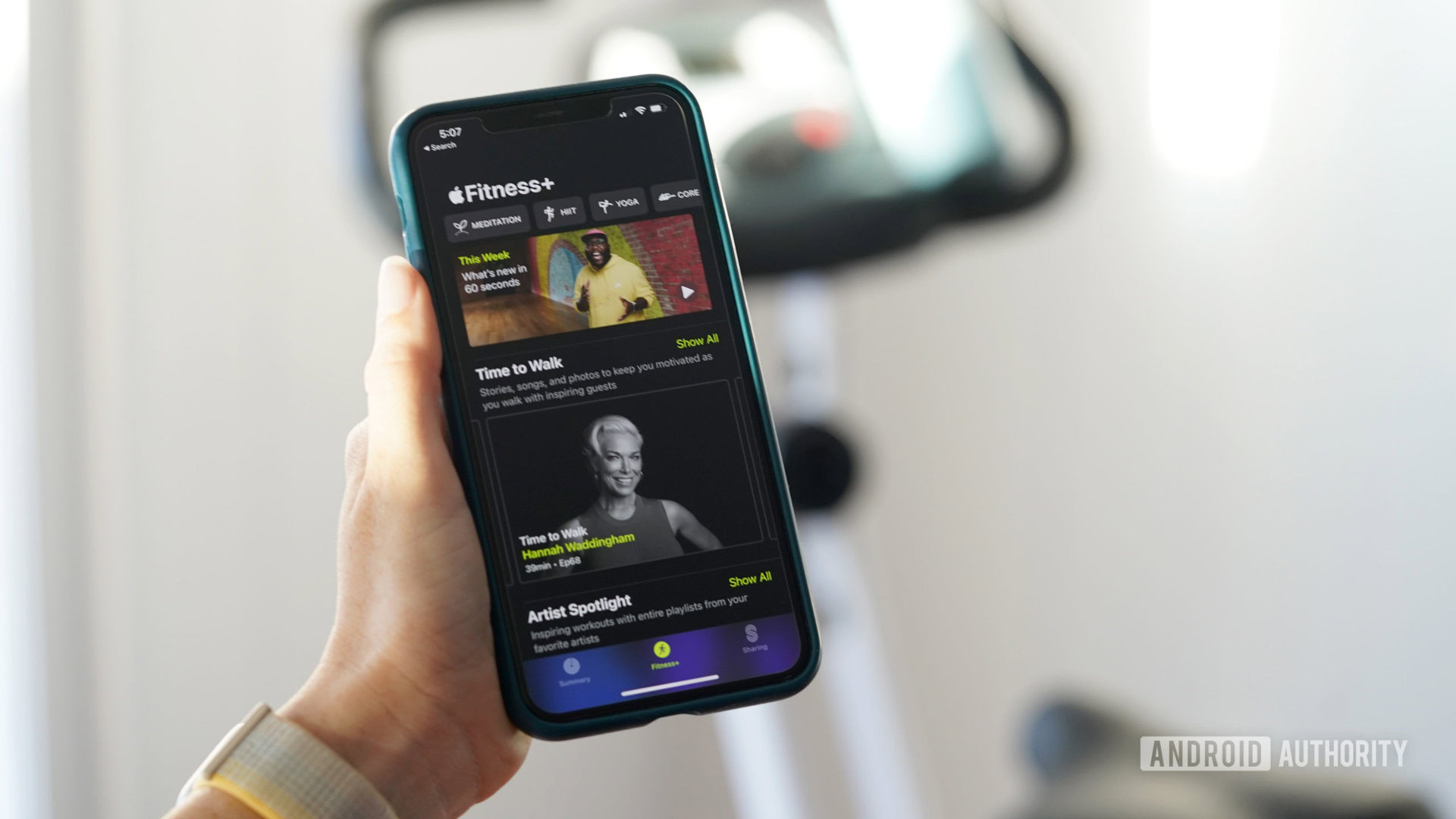
Apple jumped on the fitness subscription bandwagon with Apple Fitness Plus. It’s a premium service that can be accessed with or without an Apple Watch. The service costs users $9.99 a month or $79.99 a year. This fee gets you access to various guided workout videos from some of the most popular trainers worldwide. Video recommendations are tailored to your workout history, so if you’re a runner, cyclist, or devoted HIIT-er, plenty of videos will suit your needs.
You can access Apple Fitness Plus through the App Store or via an Apple TV. One of the best parts of the platform is being able to exercise along with a workout video on your television and if you are wearing an Apple Watch, see your heart rate data on the big screen. Your Apple Watch will also automatically record the workout in the Apple Fitness app, so you don’t need to spend time setting up a specific workout in the app. We thoroughly enjoyed the service during our Apple Fitness review period, finding it both entertaining and refreshing. A free three-month trial comes with all new Apple Watch purchases.
Garmin does not offer workout videos, though some of its devices offer animated, on-device workouts. You can follow along with cardio, strength training, yoga, and Pilates workouts right on your smartwatch. This feature pales compared to Apple’s premium offering, but at least it’s free.
Garmin devices also come with a feature called Garmin Coach. This feature consists of free training plans that will help you run a 5K, 10K, half marathon, or a variety of cycling races with the help of professional athletes. Training plans are limited, and advanced athletes might not get much out of them. However, they’re great for those who are starting their fitness journeys. Given that they are completely free, they’re a nice option to have on board.
Apple Watch vs Garmin: Which ecosystem is right for you?

If you came here hoping to find a clear winner, we’re sorry to say that it’s more nuanced than that. As we’ve covered, both platforms offer excellent fitness and health tracking features, high-end hardware, and data-packed applications.
The best Apple Watch is clearly the better smartwatch (if you own an iPhone). Its high-resolution display and tight integration with iOS make for an all-around stellar experience. The Apple Watch is customizable, stylish, and can be affordable. It’s also incredibly versatile, making it a great fit for the office or the gym. The platform is made even better thanks to Apple Fitness Plus. For those willing to pay, the service is a convenient way to stay motivated and on track.
Apple Watches are the better smartwatches, while Garmin watches should be your first pick for training.
Garmin watches have their strengths, too. Garmin’s wearables lineup covers virtually every price point from $150 to $1,000 and up. Whether you’re looking for a basic activity tracker or a do-everything fitness watch, you’re bound to find something in Garmin’s stable. We would also recommend choosing Garmin’s ecosystem for training purposes. Garmin’s fitness platform and workout analysis are more developed than Apple’s.
Garmin’s devices also offer more buttons for navigation than all Apple Watches. Many Garmin users cite this as a major strength of the platform’s devices. A touchscreen can be hard to use when sweaty or wearing gloves. The Apple Watch Ultra is the first Apple Watch to add an Action button to address the issue.
Finally, there’s one major area where Apple can’t seem to make any progress, and that’s battery life. The Apple Watch Ultra line offers improvement, but the device’s battery lives are still woefully short compared to many Garmin devices. Buy a Garmin watch if you don’t want to have to worry about battery life. It’s as simple as that.
Which ecosystem do you prefer: Apple or Garmin?
FAQs
Most Garmin watches cost hundreds of dollars, but buying one is also a good investment. Garmin produces long-lasting quality products and has a great track record of updating watches over time. They also regularly roll out new and useful features to older devices. With a Garmin device, you rarely feel obligated to upgrade too early.
No device is truly waterproof, but most Garmin devices are water-resistant to 5 ATM. Apple Watches Series 2 and newer can be used in shallow water for activities such as swimming. However, they are not built for scuba diving or high-velocity water activities. The Apple Watch Ultra and Ultra 2 feature the most water resistance with EN13319 certification for diving and increased water resistance to WR100 (water pressure up to 100 meters/333 feet).
To pair your Garmin watch and iPhone, download the Garmin Connect app for iOS. Once it is downloaded, open the app and follow the onscreen prompts.
The Garmin device closest to an Apple Watch is the Venu 3. It offers the most smartwatch features including phone call and assistant support.
If your device is paired to an Android phone, you can reply to text messages with canned quick-reply options. These responses can also be customized in the Garmin Connect app.
We know the Apple Watch vs Garmin debate can get pretty heavy sometimes, but we’ll throw caution to the wind. Which side are you on? Have you tried both? Neither? Let us know your thoughts in the comments.